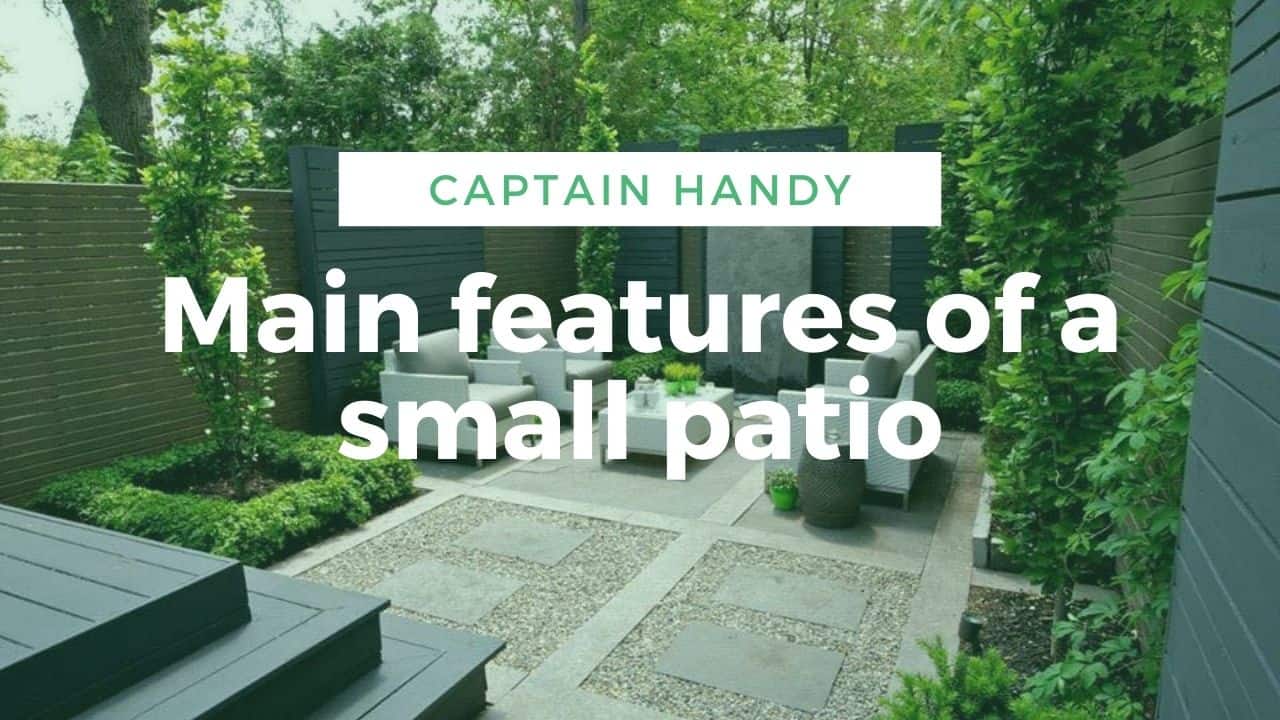
Table of Contents
Small patio – main features
The patio is a space that will help you enjoy the countryside outdoors. It is a modern corner of tranquility in the backyard of your property. The tendency to create patios came to us from the Mediterranean countries. They are especially popular in Spain, but they are just as popular in Canada.
What are the advantages of creating a patio on the plot?
- Such an open space in the countryside will become a good recreation area without serious financial investments.
- Patio will remind you that a country house is needed first and foremost for recreation, not for endless planting and subsequent maintenance.
- Patio will be the center of family and friendly gatherings, a real island of relaxation together.
- If you combine the patio area with the creation of a fire source, in addition to relaxing, it will also become an area for family meals and dinners.
Where should you start if you’re thinking about creating a patio? In this article, we will give you 8 basic recommendations that will help you go from idea to implementation.
1. Choosing a location
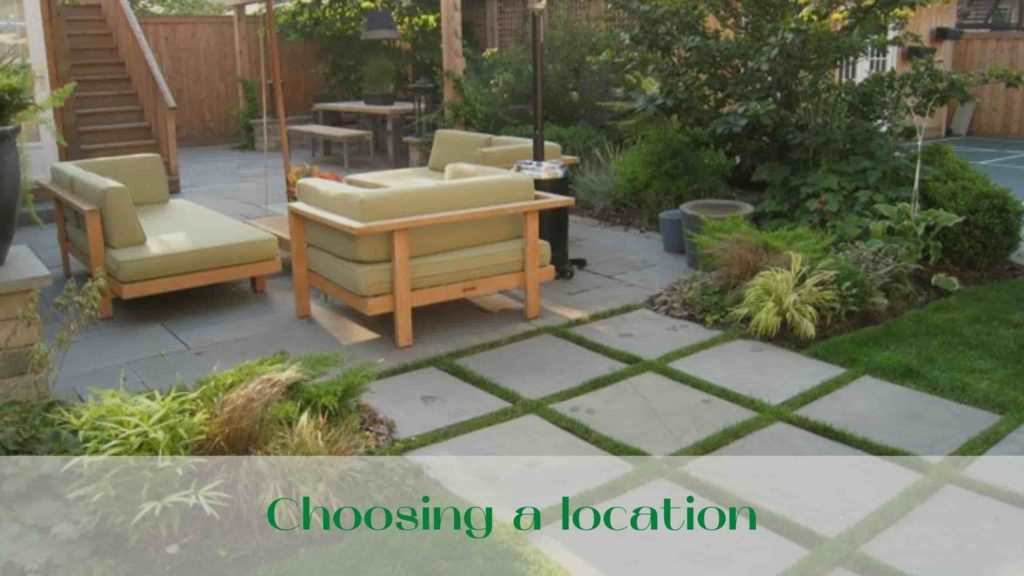
Choosing a place for a patio should start with determining its function. Will it be a place for guests and gatherings until late at night? Then you need a large space, a source of fire, lighting and a large seating area.
Or is it a quiet little corner, hidden from prying eyes for two? In that case it could be a small area with some additional fencing.
Or maybe it’s a place for a family dinner by the fire. Then the size of the patio area will depend on the number of family members and the nature of the pastime.
Or maybe it’s a place to hang out with friends and watch soccer or baseball games? You can install a projector, put comfortable chairs and a barbecue.
2. Choosing the shape of the patio
There are 2 basic concepts for a patio area: as an extension of the house or as a separate area from the house on its own.
If you choose the first option, it should be related to the house stylistically. Often patios are made in the backyard, hidden from view, but there are exceptions.
If a patio extension of the house is chosen, a square or rectangular shape will blend with most homes. It blends well with most suburban homes and doesn’t complicate the creation of this area.
But that doesn’t mean it’s the only solution.
The patio can be multi-level, two-story, unusual irregular shape and with quirky curves. If you have chosen a non-standard solution, it is better to think about this concept together with the designer.
In the case of the second solution, you can make a patio at a significant distance from the main structures. An independent patio area can be built on the shore of a real or artificial pond, in a green garden, surrounded by green trees and shrubs.
3. Making a marking and preparing the base
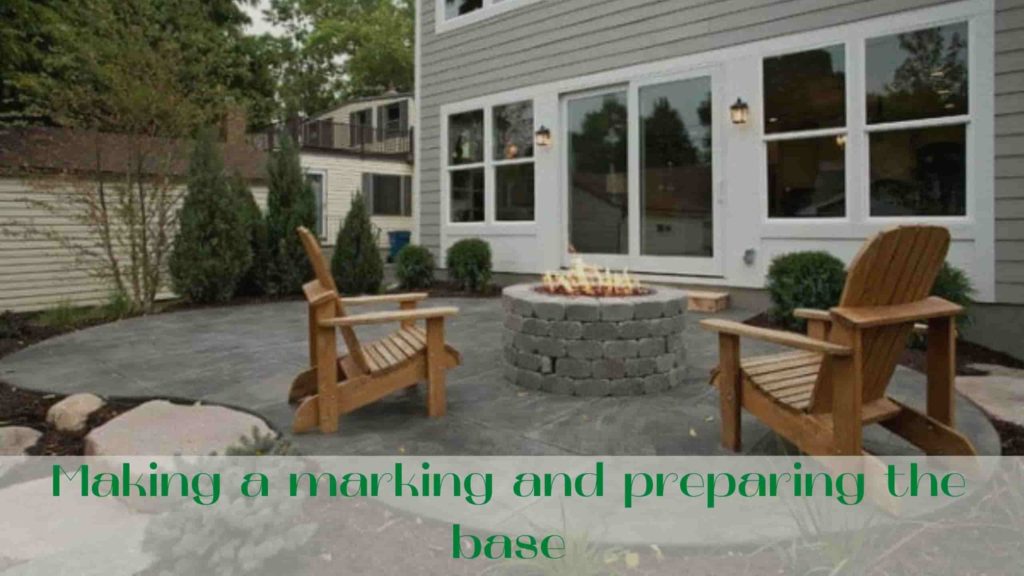
The most important condition is to choose a level site.
Once you have chosen a suitable place on the site, make its markings. After marking the area, we proceed to the leveling of the surface of this area and prepare the base.
The base of the future patio can serve:
- gravel + sand
This is a soft type of foundation. It will cost less than concrete and is not inferior to it. It will be the best choice for the patio area.
- concrete
This is a hard type foundation. It requires more labor and financial costs. It is used for problematic soils on the site, as well as for areas with high loads. The latter certainly does not apply to the patio area.
Then a cement-sand mixture is laid on the base, on which the tiles themselves are then laid.
4. Choosing the shape of the tiles
The shape of the tiles will directly depend on the chosen shape and area of the future patio area.
If the shape of the future patio is radiused, you can choose a circular shape of tiles, so you simplify the process of laying and minimize the trimming of the material. This doesn’t mean that you can’t choose a straight shape in this case, just that there will be more trimming. It will not be superfluous to add edging to visually give the circular area completeness.
If the future space will be rectangular or square, then the shape we choose is straight. If the patio area is expected to be large, then you can choose a large form of detail tiles. On a small area, a classic shape and similar shapes with small detail sizes look good.
5. Determining the type of patio
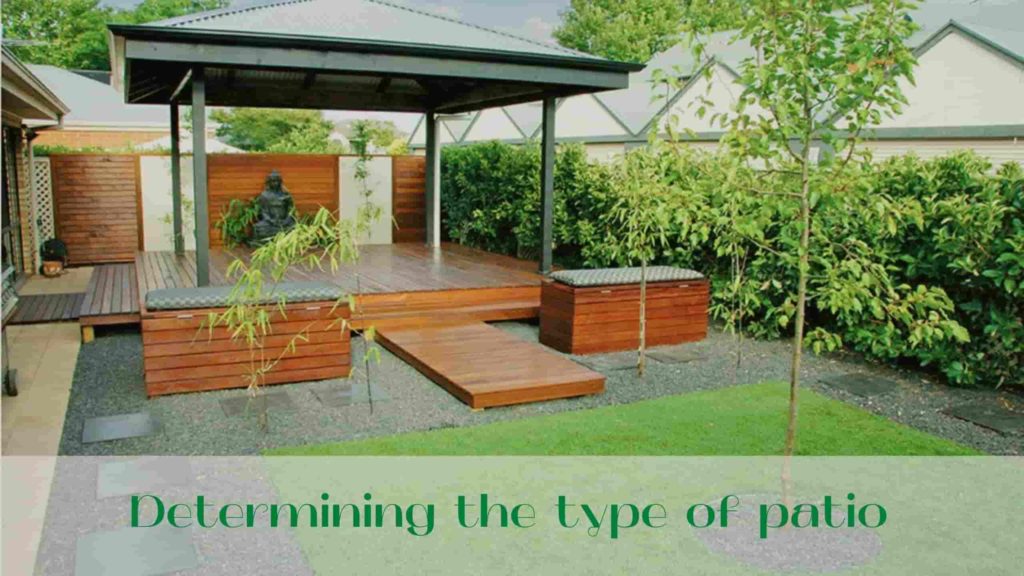
Patios can be open or enclosed.
An outdoor patio would be a good solution if the property already has a terrace or pergola with a roof and protection from the wind. In that case, you can make the patio open and in case of bad weather, take shelter in other structures.
An enclosed patio is the right choice if it is the only such structure for recreation on the site.
In that case, it is better to protect yourself from possible bad weather and think through barriers against wind and rain. It is not necessary to make them completely closed, air-permeable solutions will also do. Better to be puzzled about the design of the roof, or the device of the canopy to protect the recreation area from drips of rain or the scorching afternoon sun.
6. Create a source of heat
By creating a fire bowl in this area, you can spend not only warm summer days there, but also cozy, wrapped in a plaid in the fall and spring.
If this area was glazed, you can continue to use it even in winter.
The fire bowl can be done with the same tiles as the main area.
This way, it fits in well with the overall patio concept.
An outdoor fireplace will also add warmth and coziness to the space.
It is important to remember that an outdoor fireplace is a large stationary source of heat, so it is suitable only for large patios. In the case of small and medium-sized patios, it is better to be limited to a fire bowl.
The second point when choosing a fireplace: it will be the heart of the entire patio. So first think about the fireplace area, and then around it line up the rest of the filling of this area.
7. Installing the lighting
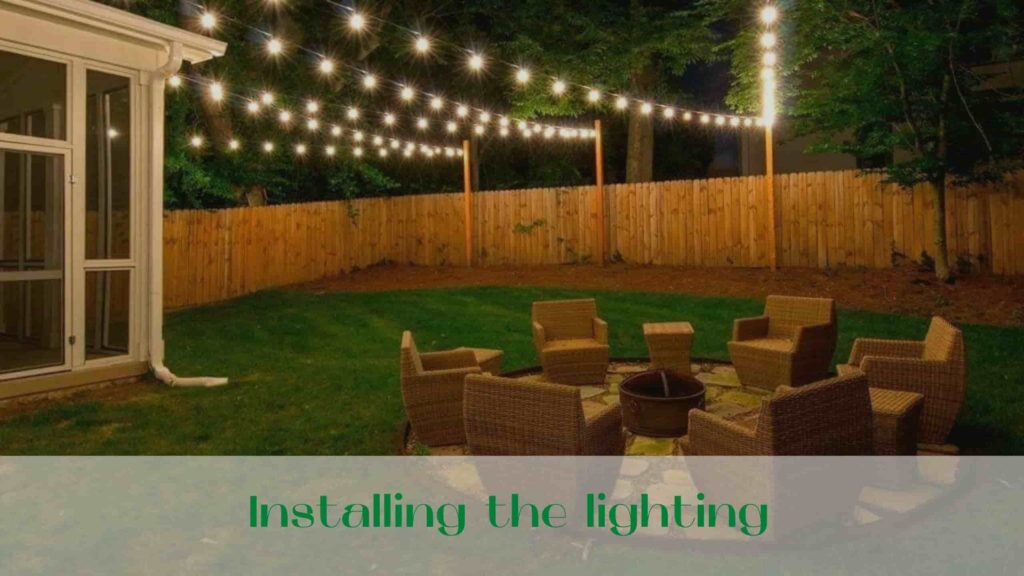
If a roof has been designed, this greatly simplifies the issue of lighting.
You can install sconces, pendant lights, and other electrical lighting options.
If you have chosen a patio area without a roof, this does not mean that you have to sit in the dark.
Wireless, self-contained sources will serve as lighting in such a case. Lights, lights, garlands, working on batteries and batteries will be a good alternative.
Also no one canceled the fire as a source of light: candle lights can brighten up your evening with a warm glow.
Special street lights can be installed along the contour of the patio and along the approach paths. Soft light directed upwards will give coziness and allow you to comfortably walk along the paths in the dark.
8. Consider the landscaping
By planting a green hedge, shrubs or small trees, you can make the patio area even more cozy and picturesque.
In the case of an outdoor patio, you can put up trellis walls and see them with climbing plants. Grapes, clematis, creeper, climbing rose, etc. will do the trick.
By planting an evergreen hedge, you can create additional protection from the wind and prying eyes.
On an enclosed patio, you can put plants in tubs or hang flower pots.
The final and nicest touch is to choose the right furniture and trim for the patio. For enclosed patios, furniture made of natural solid wood is well suited. Garden furniture for outdoor areas can be chosen from artificial or natural rattan.
